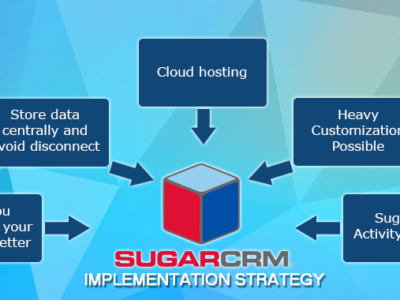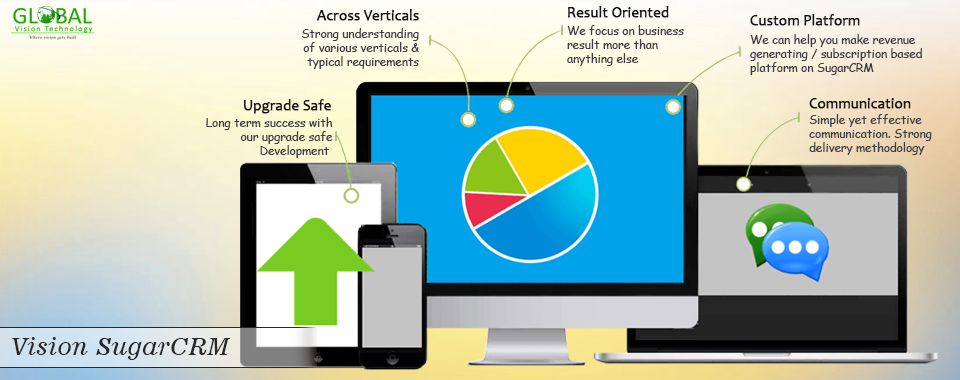
SugarCRM Development & Customization Value
Sugar CRM offers two levels of Customizations. One is the front end for which basic technical know-how would be sufficient. The second level is the backend, which requires expert knowledge. The genius of SugarCRM is that it provides both levels of customization by being friendly to third-party integrations. This improves the ‘Sugar’ experience for its users.
Sign up to get FREE CRM Trial
To know more about these SugarCRM customization levels, let’s take a close look at them.
Front end Customization
The front end customization is simple yet efficient. It allows the user to change the Sugar interface, according to their convenience and requirement. A user with admin rights can play around with a number of Sugar supported functionalities. These include altering themes, creating modules, adding and designing required fields and designing layout for editing, detail and list views. The user can also:
- Create relations between modules
- Add, remove or create sub-panels
- Add dependencies in edit and detail view of modules
- Calculate field value
- Define access by role management for security purposes
Furthermore, the user can manage his profile, according to his own preference.
The user can also modify the home screen using dashboard, dashlets, rows and columns. These four elements take on a key role in home screen customization as they are essential in facilitating multiple products or services on the unified interface. SugarCRM Development gives users the freedom to create product or service specific dashboards. The dashboard enlists multiple dashlets with rows and columns. The method of adding dashboards is simple. It can be done with the “Add” button available on the home screen. SugarCRM Development compiles a default list of dynamic features under dashlets with unlimited data.
Backend Customization
Being open sourced, SugarCRM Development can be tweaked with the help of coding and by using third party tools. It’s the backend customization that makes SugarCRM Development different from others. It enables seamless integration of third-party tools to strengthen its functionality. With backend customizations, users can make use of telephony solution, email marketing integration, and many other valuable tools to boost productivity. Some of the commonly used integrations are,
- Google and Third-party APIs
- Social media connectors
- Reporting tools
- OpenCart integrations
- Customer Portals
- QuickBooks Integrations
- Payment gateways
- Web-to-lead forms
It’s the collaboration of these tools that makes SugarCRM Development innovative, flexible and affordable.
Another feature made possible through backend customization is tweaking views to expand user accessibility. Multiple modules can be compiled on one screen so that the user doesn’t need to navigate between modules. This is possible through coding. The user can also customize reports, logics, validation, modules and sub-panels to align SugarCRM Development with their specific business requirements.
To find out more about SugarCRM, click here![]() to conduct a free call.
to conduct a free call.

